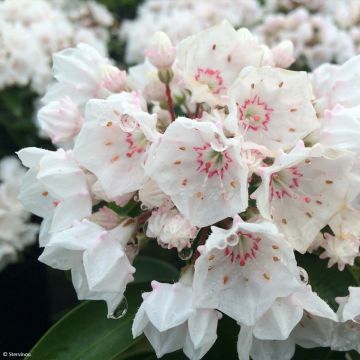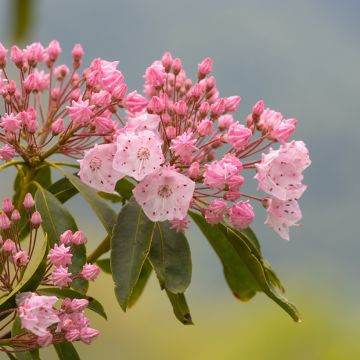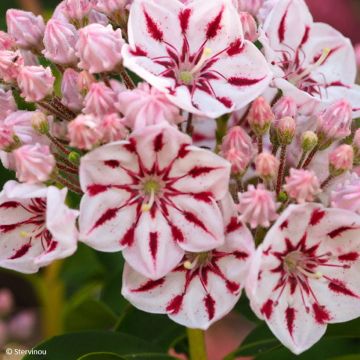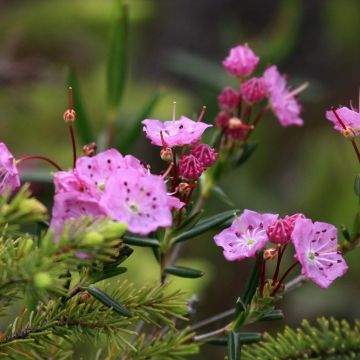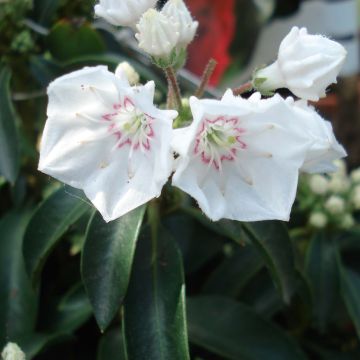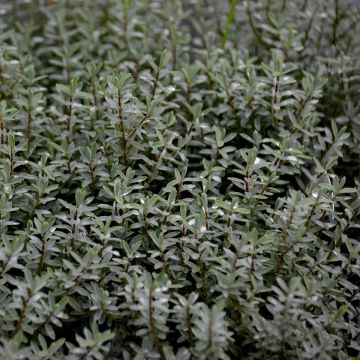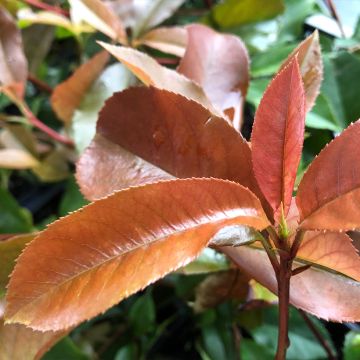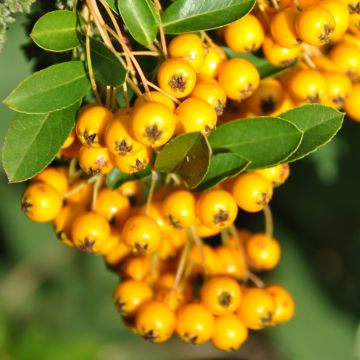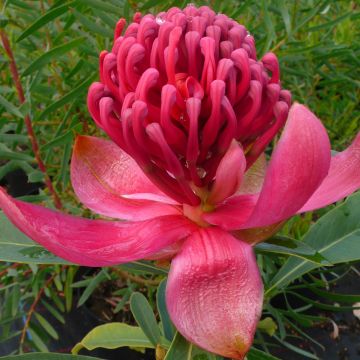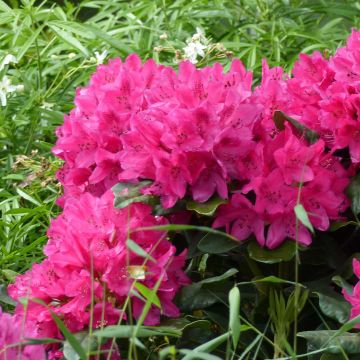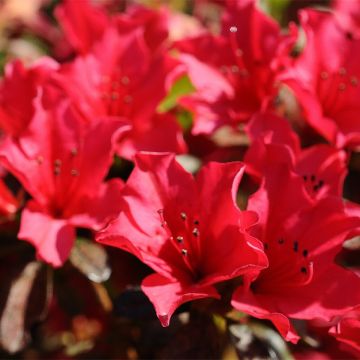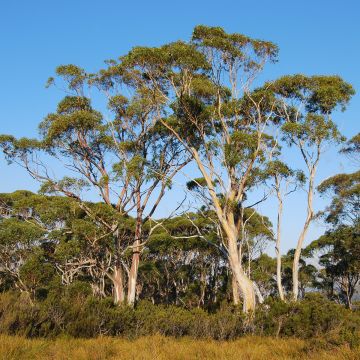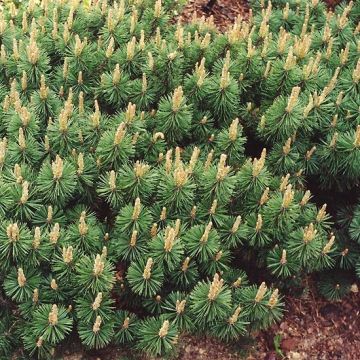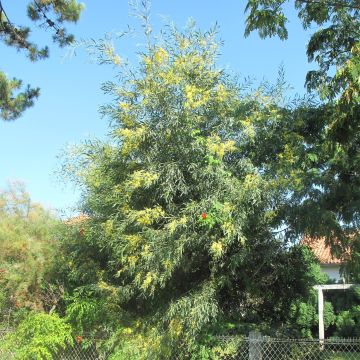

Kalmia latifolia Pinwheel - Mountain Laurel
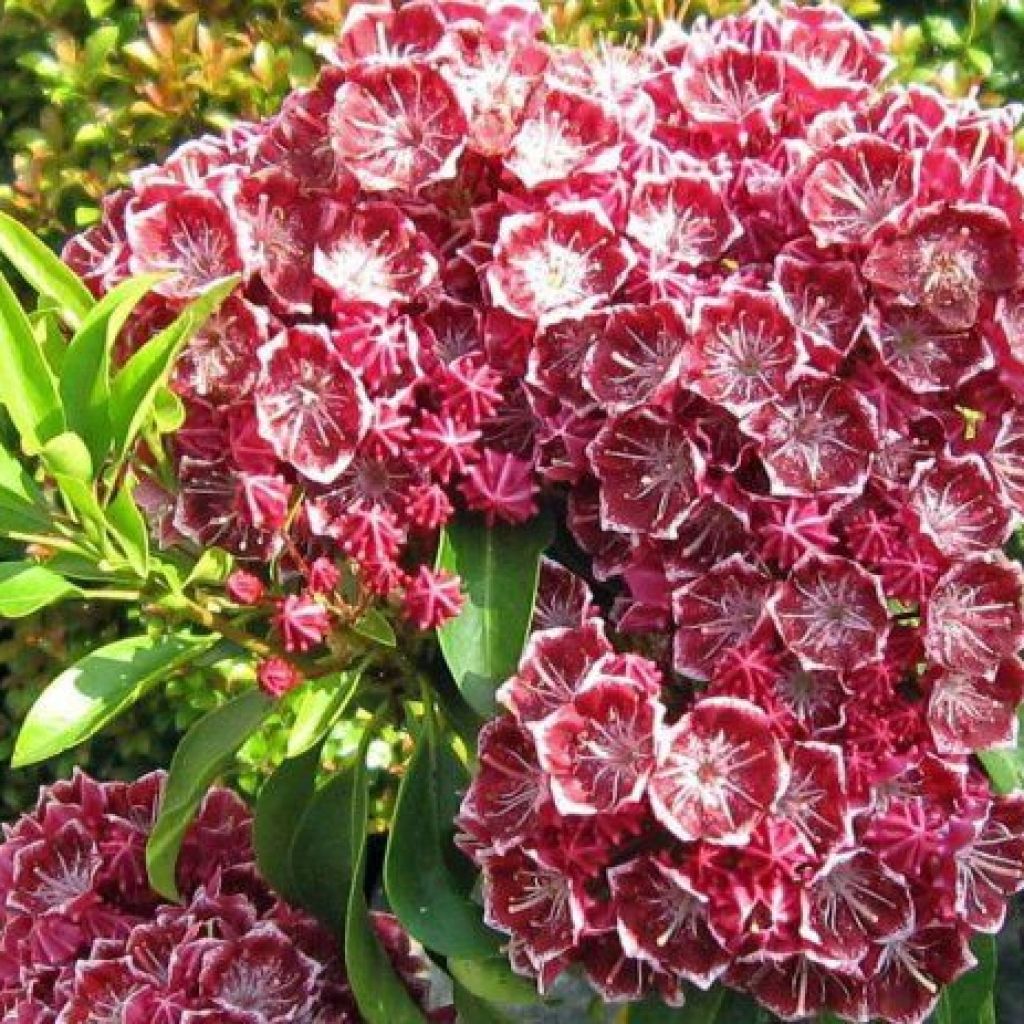

Kalmia latifolia Pinwheel - Mountain Laurel
Kalmia latifolia Pinwheel - Mountain Laurel
Kalmia latifolia Pinwheel
Mountain Laurel, Calico Bush, Spoonwood, American Mountain Laurel, Broad-leaved Kalmia
This plant carries a 24 months recovery warranty
More information
We guarantee the quality of our plants for a full growing cycle, and will replace at our expense any plant that fails to recover under normal climatic and planting conditions.
From €7.90 for pickup delivery and €6.90 for home delivery
Express home delivery from €8.90.
Does this plant fit my garden?
Set up your Plantfit profile →
Description
Kalmia latifolia ‘Pinwheel’, also known as Mountain Laurel, is a charming evergreen bush of heathlands, with a bushy and light habit. In May-June, it is adorned with a multitude of clusters of flowers which are pale pink in colour with a crimson red heart and surrounded by a white border. Its pretty pinkish-white floral buds add to its natural charm when planted as a specimen or grouped with heathland loving plants like rhododendrons.
Kalmia latifolia, originating from the mountains of East North America, and also named Mountain Laurel or American Laurel, belongs to the Ericaceae family, like Heather and Rhododendron. Kalmia latifolia ‘Pinwheel’, with its dark green slightly glossy leaves, is a slow growing shrub not exceeding 2 metres (6 feet 7 inches) in height and 1.5 m (4 ft 11 in) in width. Its small branching trunk gives it a bushy, dense and rather upright habit. Its shiny green, evergreen foliage with a lighter underside, is formed of small tough and thick leaves, alternate and lanceolate, providing decorative interest all year round. It becomes a feature plant in May-June, due to its very spectacular flowers! It is entirely covered with bowl-shaped flowers with a waxy texture. Each branch carries terminal clusters (corymbs) each with up to 50 small flowers which are predominantly pink. These are in the form of 5-sided, campanulate corollas, 2 to 2.5 cm (0.8 to 1 in) in diameter, pale pink and illuminated by a dark red heart edgedin white. Each flower carries 10 white stamens. The flowers do not bloom all at once but appear in succession. The corymbs present astonishing contrasts between the not yet bloomed, veined and pinkish white floral buds, and the already bloomed flowers. After flowering, if they have not fallen, the flowers give way to brown fruits which last through the winter.
Kalmias deserve a place in the garden. Their flowers are enchanting. They are particularly hardy heathland bushes that should be positioned in semi-shade, in a moist and humus-rich soil. Certainly unique and very decorative, Kalmia ‘Pinwheel’ will look beautiful in the garden where it will standout against all the surrounding plants! It will be the ideal companion of heathland plants (Rhododendrons, Azaleas, Camellias, Heathers, Hydrangeas, Japanese Maples, Magnolias, Andromedas, Cyclamens…). It will work perfectly within an informal hedge, within mixed shrub planting, amongst perennial planting, around a pond, or even as a specimen plant. Due to its slow growth, it is perfectly suited to be grown in a pot on balconies or patios, provided that the soil is always kept moist.
Properties:
Kalmia latifolia is a shrub which is entirely toxic (leaves, flowers, fruits, roots) for humans as well as animals (dogs, cats, sheep, horses) when eaten.
However, it is used in homeopathy for pain relief. In the past, its very hard wood was used to make many tools, notably wooden spoons, hence its English nickname of Spoonwood.
Anecdote:
The denomination of the Kalmia genus was chosen by Carl von Linne, in homage to the famous Swedish botanist Pehr Kalm, who was one of the first to explore the flora in certain parts of North America from 1747 to 1751. Kalmia latifolia ‘Pinwheel’ was selected in 1982 by Richard A. Jaynes and introduced in 1987.
Kalmia latifolia Pinwheel - Mountain Laurel in pictures


Plant habit
Flowering
Foliage
Botanical data
Kalmia
latifolia
Pinwheel
Ericaceae
Mountain Laurel, Calico Bush, Spoonwood, American Mountain Laurel, Broad-leaved Kalmia
North America
Other Kalmias
Planting and care
Originating from the mountains of Eastern North America, Kalmia latifolia Pinkobello is extremely hardy and can withstand very low temperatures, below -20°C (-4 °F). Belonging to the Ericaceae family, it should be placed in a semi-shaded exposure, in a humus-rich and fertile, acidic, damp but well-drained soil. Plant in spring or autumn to avoid periods of frost or exreme heat. Plant in a wide and deep pit (40 cm (15.7 in) by 40 cm (15.7 in)) so that your Kalmia Pinkobello can establish itself. Regular watering for the first few weeks after planting is necessary to keep the soil moist. A mulch at the base of the plant can be beneficial to protect the fine and shallow roots. Each spring, scratch the soil around the base of the plant and top dress with potting compost, ericaceous compost or pine bark. If the soil is chalky, it should be replaced with a mixture of ericaceous compost or leaf compost. The Mountain Laurel can tolerate sunny exposure, but do not let the sun scorch the leaves. Position so that it is in shade during the hottest hours of the day, and mulch the base of the plant to keep the soil cool. During the summer period and especially in case of drought, regular watering (preferably with rainwater) will be essential. Summer watering is particularly important since this is when the flower buds form for the following spring. The mountain laurel likes moisture and high humidity and will be grow vigorously in coastal or rainy climates. With its slow growth, it is very well adapted to be grown in a pot on a patio or balcony. Plant in a large pot and mulch and water well to avoid the risk of the soil drying out. Pruning of Kalmia latifolia is hardly necessary, apart from the removal of faded flowers. Pruning may hinder the flowering for the following year as the flower buds form at the ends of the branches. However, it is possible to remove dead wood and perform a very light prune to maintain a balanced habit of the dwarf Kalmia.
Planting period
Intended location
Care
-
, onOrder confirmed
Reply from on Promesse de fleurs
Evergreen shrubs
Haven't found what you were looking for?
Hardiness is the lowest winter temperature a plant can endure without suffering serious damage or even dying. However, hardiness is affected by location (a sheltered area, such as a patio), protection (winter cover) and soil type (hardiness is improved by well-drained soil).

Photo Sharing Terms & Conditions
In order to encourage gardeners to interact and share their experiences, Promesse de fleurs offers various media enabling content to be uploaded onto its Site - in particular via the ‘Photo sharing’ module.
The User agrees to refrain from:
- Posting any content that is illegal, prejudicial, insulting, racist, inciteful to hatred, revisionist, contrary to public decency, that infringes on privacy or on the privacy rights of third parties, in particular the publicity rights of persons and goods, intellectual property rights, or the right to privacy.
- Submitting content on behalf of a third party;
- Impersonate the identity of a third party and/or publish any personal information about a third party;
In general, the User undertakes to refrain from any unethical behaviour.
All Content (in particular text, comments, files, images, photos, videos, creative works, etc.), which may be subject to property or intellectual property rights, image or other private rights, shall remain the property of the User, subject to the limited rights granted by the terms of the licence granted by Promesse de fleurs as stated below. Users are at liberty to publish or not to publish such Content on the Site, notably via the ‘Photo Sharing’ facility, and accept that this Content shall be made public and freely accessible, notably on the Internet.
Users further acknowledge, undertake to have ,and guarantee that they hold all necessary rights and permissions to publish such material on the Site, in particular with regard to the legislation in force pertaining to any privacy, property, intellectual property, image, or contractual rights, or rights of any other nature. By publishing such Content on the Site, Users acknowledge accepting full liability as publishers of the Content within the meaning of the law, and grant Promesse de fleurs, free of charge, an inclusive, worldwide licence for the said Content for the entire duration of its publication, including all reproduction, representation, up/downloading, displaying, performing, transmission, and storage rights.
Users also grant permission for their name to be linked to the Content and accept that this link may not always be made available.
By engaging in posting material, Users consent to their Content becoming automatically accessible on the Internet, in particular on other sites and/or blogs and/or web pages of the Promesse de fleurs site, including in particular social pages and the Promesse de fleurs catalogue.
Users may secure the removal of entrusted content free of charge by issuing a simple request via our contact form.

































